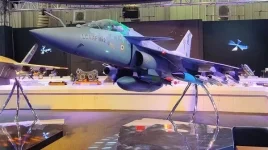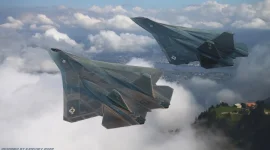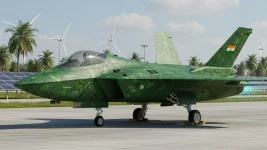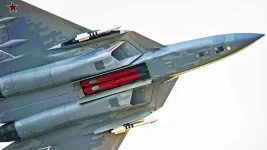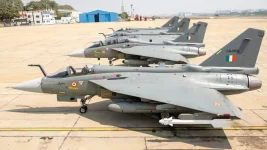- Views: 3K
- Replies: 10

The Light Combat Aircraft (LCA) Tejas program stands as a testament to India's ambition and perseverance in indigenous defence development. This journey of innovation and national pride has seen the Tejas evolve from its initial concept as a lightweight fighter to a versatile multi-role aircraft, embodying India's growing aerospace prowess.
Conceived in 1983 to replace the aging MiG-21 fleet, the Tejas program faced numerous challenges, taking nearly two decades for the first prototype to take flight in 2001. This long gestation period underscores the complexities of indigenous aircraft development.
The name "Tejas," meaning "radiance" or "brilliance" in Sanskrit, reflects the aspirations associated with this aircraft. Its distinctive tailless, compound delta wing design not only contributes to its unique appearance but also enhances its maneuverability and aerodynamic efficiency.
At the heart of the Tejas lies a technological marvel: a quadruplex digital fly-by-wire (FBW) flight control system developed indigenously. This system provides quadruple redundancy for enhanced flight safety and control, placing the Tejas among an elite group of aircraft with such advanced avionics.
Initially envisioned as a lightweight fighter, the Tejas has evolved into a multi-role aircraft capable of performing air superiority, maritime reconnaissance, and strike missions. This adaptability is evident in its various iterations, including the Tejas Mk1, Mk1A, and the upcoming Mk2, each with enhanced capabilities.
While primarily an indigenous project, the Tejas program has benefited from international collaborations. Early variants utilize the General Electric F404 engine, with plans to transition to the more powerful F414 in the future. Similarly, efforts are underway to replace the initial Israeli radar with an indigenous system.
The Tejas program has steadily increased its indigenous content. From less than 40% in the initial prototypes, current production models boast over 60% indigenous components, with ambitions to reach nearly 75% in future versions. This progress highlights India's commitment to self-reliance in aerospace manufacturing.
The Indian Air Force inducted the Tejas into service in 2016, with No. 45 Squadron ("Flying Daggers") becoming the first to operate the aircraft. Since then, additional squadrons have been equipped with the Tejas, demonstrating its operational effectiveness.
The Tejas has garnered international attention, with countries like Argentina, Malaysia, and the Philippines expressing interest in its acquisition. This highlights the aircraft's competitive capabilities and positions India as an emerging player in the global arms market.
The Tejas program continues to evolve. The development of the Tejas Mk2 is underway, featuring a more powerful engine, advanced avionics, and enhanced combat capabilities. Projects like the Naval LCA and the Twin Engine Deck Based Fighter (TEDBF) are expanding the Tejas family to meet diverse operational needs.
Despite facing skepticism and developmental delays, the Tejas has consistently proven its worth. It has overcome challenges and silenced critics, demonstrating its capabilities in both domestic and international arenas.
The LCA Tejas program symbolizes India's determination to achieve technological independence in aerospace. As the Tejas continues to evolve, it carries the aspirations of becoming a formidable asset for the Indian Armed Forces and a symbol of Indian innovation on the global stage.

